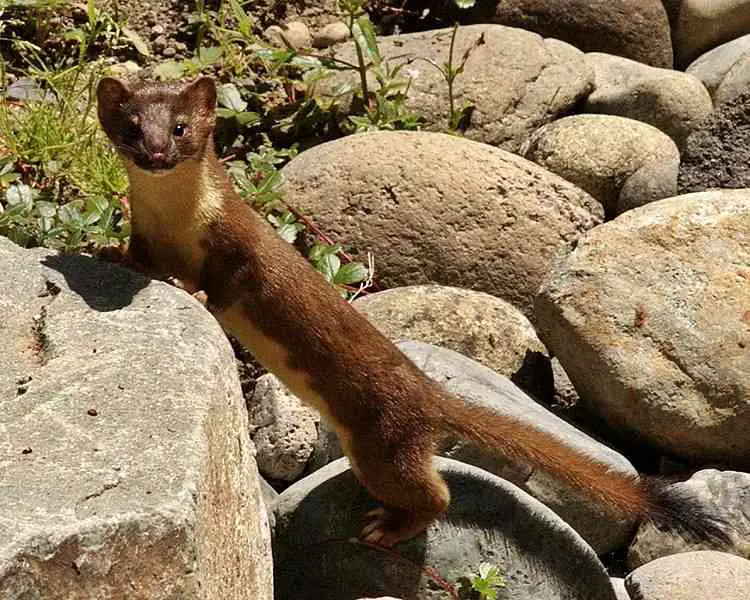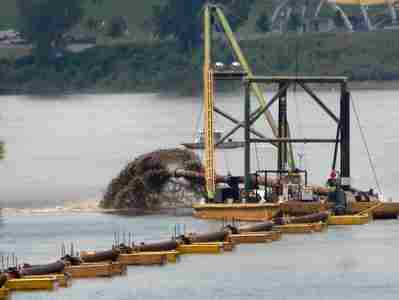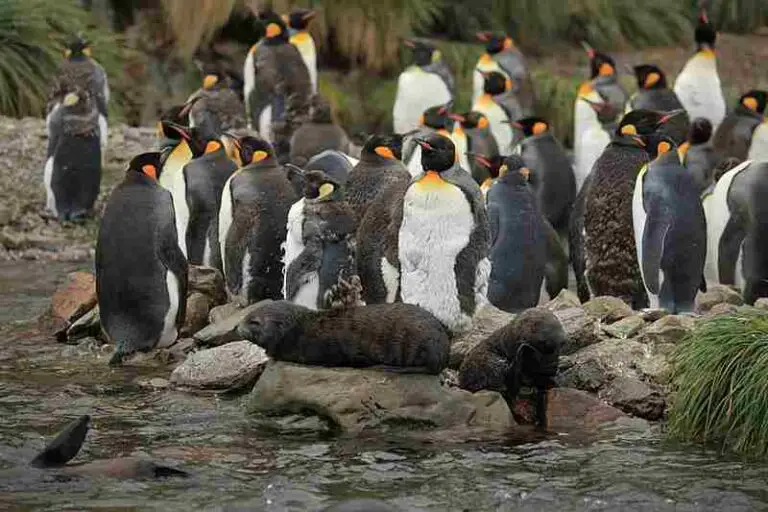7 Environmental Impacts Examples Explained
Environmental impacts examples are; pollution, landform changes, resource depletion, climate change, flooding, erosion, loss of soil fertility, and loss of biodiversity.
This article discusses environmental impacts examples, as follows;
1). Pollution (as one of the Environmental Impacts Examples)
Natural and anthropogenic environmental impacts commonly occur in the form of any of various types of environmental degradation.
One of these types is pollution; which typically involves the introduction of large amounts of foreign materials into a medium.
It may occur in the form of air, water or soil pollution, and is an indication of the effect of unsustainable processes on the ecosystem.
When air pollution occurs, it usually results in a decline in air quality within a given area. Air pollution is very significant because of the relative ease with which it occurs, and the high risks which it poses.
Studies have linked air pollution to increase in mortality and morbidity rates among living organisms [5]. The effects transcend the human population, and affect all ecosystem including tundras, grasslands, deserts and forests.
The causes of air pollution include natural hazards like volcanic eruption and wildfires, as well as human activities like mining, raw material processing, electricity generation, and manufacturing.
Pollutants that can be contaminate the air include sulfuric gases, particulate matter, and ground-level ozone.
In addition to causing human health problems, air pollutants can affect vegetation, reducing plant growth and facilitating spontaneous deforestation.
Air pollution can contribute to soil and water pollution by contaminating precipitation which enters these media [6]. This could occur in the form of acid rain, among others.
Poor waste management, energy waste, unsustainable agricultural practices, mining, oil spill and stormwater pollution all contribute to soil and water pollution.
When soil and water are polluted, organisms in these media become at risk.
Measures to control pollution include soil conservation, water conservation, environmental remediation, sustainable farming, efficient recycling, implementation of energy conservation, energy efficiency, and circular economy principles.
Others include the development and adoption of renewable energy, electric cars, hybrid vehicles, smart houses, and other technologies aimed at achieving environmental sustainability.

2). Landform Changes
Landform changes are influenced by both human and natural factors [3].
Human factors that influence landform changes include drilling for oil and gas, mining, soil excavation, and construction.
Natural factors influencing landform changes include tectonic processes like earthquakes, soil erosion, and topography-induced mass movement.
Also, human activities can induce climate variability which in turn facilitates excessive precipitation and erosion. Also, construction and excavation activities can cause land instability, leading to mass movement by rock fall, creep, slump, avalanches and other similar processes.
Landform changes are particularly active in areas of unusual topography, such as hilly, sloping regions. Aside topography, other factors like soil type, drainage characteristics, and presence (or absence) of vegetation also determine the trend of landform changes.
Significant changes in the geomorphology of any given area could lead to land value decrease, or total land loss, especially when these changes make the land less accessible and usable.
Sustainable farming practices and general land management methods that include crop rotation, terracing, contour farming, bunding, cover cropping and conservation tillage are all applicable to mitigate such environmental impacts.

3). Resource Depletion (as one of the Environmental Impacts Examples)
As the term implies, resource depletion refers to the loss of substantial portion of available resources.
In the environment, unsustainable human activities can lead to resource depletion. They include deforestation, excessive mining and drilling for energy resources, and non-recycling.
Efforts to generate electricity are a major cause of resource depletion. This includes the use of fossil fuels, nuclear fuels, hydroelectric facilities, and biofuel.
When energy resources (and all other types of natural resources) are extracted and consumed beyond their reserve and replenishment capacities, the outcome is significant depletion of resources [2].
While hydroelectric and bioenergy systems are renewable energy-based, unsustainable approaches that do not allow for efficient recycling of biomass and water resources, can cause depletion.
Soil loss due to erosion is another example of resource depletion, and signifies a loss of land and soil resources.
Resource depletion is a major threat to sustainable development because it reduces the accessibility of resources for future generations [7]. Energy recovery and conservation are among the numerous practices that have been developed to address this problem.
4). Climate Change
Climate change is one of the most common examples of environmental impacts.
It can be said to be both a cause and an example, because climate change induces, and is induced by, environmental impacts.
Causes of climate change include various activities and processes, most of which involve humans.
However, the main cause is greenhouse emission, whereby unsustainable amounts of some gases are released into the atmosphere as byproducts of biodegradation, fossil fuel combustion (in transport systems, electric generators, power plants, and industrial processing facilities), deforestation, mining, and biomass conversion.
Greenhouse emission is closely related to global warming, which is the increased-temperature effect of solar energy trapping by greenhouse gases.
Global warming causes climate variability, increased atmospheric temperatures, and irregular precipitation among other effects. These effects are part of what constitutes the phenomenon called climate change.
In addition to being an environmental impact of human activity, climate change induces other environmental impacts. These include loss of habitat through physicochemical changes like temperature rise.
Such an impact could be observed in temperate ecosystems like tundras, where climate change is responsible for large-scale glacial melting [4], as well as in arid zones where climate change increases the rate and scale of desertification.
Glacial melting leads to rise in sea levels, which increases the risk of flooding, erosion, and further habitat loss.
Climate change caused further greenhouse emission by degrading natural carbon sinks like forests and permafrost, while increasing the potency of carbon sources.
5). Flooding and Erosion (as one of the Environmental Impacts Examples)
Flooding and erosion are closely-related environmental impacts, whose occurrence is facilitated by climate change.
Excessive precipitation, glacial melting and sea level rise are all climate change effects, and increase the risk of flooding.
Flooding itself results in soil erosion, over-saturation, loss of fertility and destruction of agricultural crops [1]. Manmade infrastructure like water dams and roads can also be damaged.
6). Loss of Soil Fertility
As already implied, loss of soil fertility is linked to climate change, flooding and erosion. It is also caused by unsustainable farming and land use practices.
These factors cause soil nutrients, organic matter and sediments to be depleted, eroded or leached, thereby rendering the soil unfit for productive plant growth. The ripple effects of low soil fertility include food insecurity, hunger and economic recession [8]. Sustainable practices for addressing soil fertility loss include composting, crop rotation, and cover cropping.
7). Loss of Biodiversity (as one of the Environmental Impacts Examples)
Loss of biodiversity signifies a decline in the abundance of life forms on Earth, both in terms of species and community populations.
Biodiversity loss is an environmental impact that is induced by others such as climate change, resource depletion, loss of soil fertility, and habitat degradation.
It is an indication of a decline in the efficiency with which bioenergy is circulated across the trophic levels of the energy pyramid, which is also a decline in the productive capacity of the ecosystem.
Conclusion
Environmental impacts examples are;
1. Pollution
2. Landform Changes
3. Resource Depletion
4. Climate Change
5. Flooding and Erosion
6. Loss of Soil Fertility
7. Loss of Biodiversity
References
1). Akbari, M.; Neamatollahi, E.; Memarian, H.; Alizadeh-Noughani, M. (2021). “Assessing the Impact of Floods Disaster on Soil Erosion Risk Based on the RUSLE-GloSEM Approach in Western Iran.” Available at: https://doi.org/10.21203/rs.3.rs-775510/v1. (Accessed 22 September 2022).
2). Aquilas, N. A.; Forgha, N. G.; Mobit, M. O.; Agbor, M. S. (2019). “Natural Resources Depletion and Economic Growth:: Implications and Prospect for Cameroon Economic Emergence by 2035.” Natural Resource Endowment and the Fallacy of Development in Cameroon (pp.31-56). Available at: https://doi.org/10.2307/j.ctvvh85v5.8. (Accessed 22 September 2022).
3). He, H.; Lai, Z.; Mischke, S. (2016). “Meteorological Impacts on Landform Changes.” Advances in Meteorology 2016:1-3. Available at: https://doi.org/10.1155/2016/8048174. (Accessed 21 September 2022).
4). Heijmans, M. M.; Magnússon, R.; Lara, M. J.; Frost, G. V.; Myers-Smith, I. H.; Huissteden, K. V.; Jorgenson, M. T.; Fedorov, A.; Epstein, H. E.; Lawrence, D. M., Limpens, J. (2022). “Tundra vegetation change and impacts on permafrost.” Nature Reviews Earth & Environment 3(1):68-84. Available at: https://doi.org/10.1038/s43017-021-00233-0. (Accessed 22 September 2022).
5). Kelishadi, R. (2012). “Environmental Pollution: Health Effects and Operational Implications for Pollutants Removal.” Journal of Environmental and Public Health 2012(9):341637. Available at: https://doi.org/10.1155/2012/341637. (Accessed 21 September 2022).
6). Manisalidis, I.; Stavropoulos, A.; Bezirtzoglou, E. (2020). “Environmental and Health Impacts of Air Pollution: A Review.” Frontiers in Public Health 8. Available at: https://doi.org/10.3389/fpubh.2020.00014. (Accessed 21 September 2022).
7). Rimos, S.; Hoadley, A. F.; Brennan, D. J. (2013). “Environmental consequence analysis for resource depletion.” Process Safety and Environmental Protection 92(6). Available at: https://doi.org/10.1016/j.psep.2013.06.001. (Accessed 21 September 2022).
8). Sanchez, P. A. (2002). “Ecology – Soil fertility and hunger in Africa. Science295(5562), 2019-2020.” Science 295(5562):2019-20. Available at: https://doi.org/10.1126/science.1065256. (Accessed 22 September 2022).




